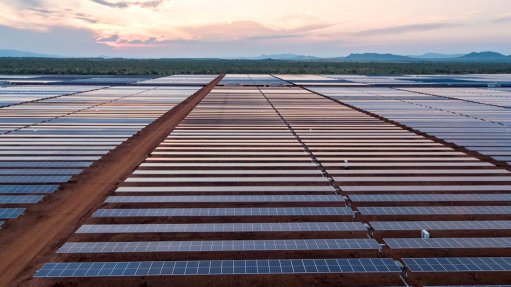Helping mines find the real source of nitrates in water
The issue of water quality has become topical in the aftermath of the contamination in the Olifants River catchment in Mpumalanga, as well the surfacing of acid mine drainage around Gauteng and other provinces.
Mining consultancy SRK Consulting’s principal hydrogeologist Sarah Skinner highlights that nitrogen is one of the contaminants of concern in the Olifants catchment, where the average nitrate concentrations in some areas can be as high as 45 mg/l – well above the official national South African drinking water quality standard of 11 mg/l.
Skinner notes that the use of nitrogen-based explosives can result in increased nitrogen levels in groundwater, as most commercial explosives contain between 70% and 90% ammonium nitrate – which is highly soluble in water. Spillage, dissolution in wet holes and incomplete detonation during blasting activities results in soil and water contamination with nitrates, nitrites and ammonia.
However, human settlements also contribute to higher-than-average nitrogen levels – usually through sources like pit latrines and cattle lots. Tilling of soils and the use of fertilisers can also add to the nitrate content in the water resources, as can natural geology.
“These [numerous] nitrate sources can contribute to the water quality monitoring data generated by the mines and complicate the quantification of mining-related impacts on the water resources. It is [therefore] critical for mines to understand the variable sources contributing to the impact at a specific monitoring point,” she says.
Skinner, citing tools that can be used to establish the sources of elevated nitrogen levels in the water around a mine, notes that the use of nitrogen isotopes, “is one of the better ways to establish whether the source of the nitrogen is from human and animal waste – as opposed to chemical fertilisers and explosives.”
This method can pick up a ‘fingerprint’ in the nitrogen isotope, which is indicative of where the nitrogen originates. Conventional nitrate analysis only gives quantitative data and does not discriminate between sources.
“However, due to the fact that the ammonium nitrate infertiliser and in explosives are essentially the same, nitrogen isotopes will not be able to differentiate whether the source is from fertilisers or mining-related,” Skinner explains. “The next steps in distinguishing between a fertiliser or explosive source involve hydro-chemical testing to establish cation-anion ratios.”
This multi-disciplinary and multi-faceted approach can identify the origin of the source.Skinner notes that once the source is identified, further assessments are required to identify the most practical and cost-effective management measures.
She states that the use of multiple tools in the source assessment allows the question of “Where is the source of this nitrogen?” to be answered.
“Where sources are unrelated, mines can motivate for changes to the regulated limits . . . where mines are having an impact, strategies can be focused on the priority sources where management will achieve the greatest improvement or offer the best protection to the regional water resource,” she concludes.
Comments
Press Office
Announcements
What's On
Subscribe to improve your user experience...
Option 1 (equivalent of R125 a month):
Receive a weekly copy of Creamer Media's Engineering News & Mining Weekly magazine
(print copy for those in South Africa and e-magazine for those outside of South Africa)
Receive daily email newsletters
Access to full search results
Access archive of magazine back copies
Access to Projects in Progress
Access to ONE Research Report of your choice in PDF format
Option 2 (equivalent of R375 a month):
All benefits from Option 1
PLUS
Access to Creamer Media's Research Channel Africa for ALL Research Reports, in PDF format, on various industrial and mining sectors
including Electricity; Water; Energy Transition; Hydrogen; Roads, Rail and Ports; Coal; Gold; Platinum; Battery Metals; etc.
Already a subscriber?
Forgotten your password?
Receive weekly copy of Creamer Media's Engineering News & Mining Weekly magazine (print copy for those in South Africa and e-magazine for those outside of South Africa)
➕
Recieve daily email newsletters
➕
Access to full search results
➕
Access archive of magazine back copies
➕
Access to Projects in Progress
➕
Access to ONE Research Report of your choice in PDF format
RESEARCH CHANNEL AFRICA
R4500 (equivalent of R375 a month)
SUBSCRIBEAll benefits from Option 1
➕
Access to Creamer Media's Research Channel Africa for ALL Research Reports on various industrial and mining sectors, in PDF format, including on:
Electricity
➕
Water
➕
Energy Transition
➕
Hydrogen
➕
Roads, Rail and Ports
➕
Coal
➕
Gold
➕
Platinum
➕
Battery Metals
➕
etc.
Receive all benefits from Option 1 or Option 2 delivered to numerous people at your company
➕
Multiple User names and Passwords for simultaneous log-ins
➕
Intranet integration access to all in your organisation

















